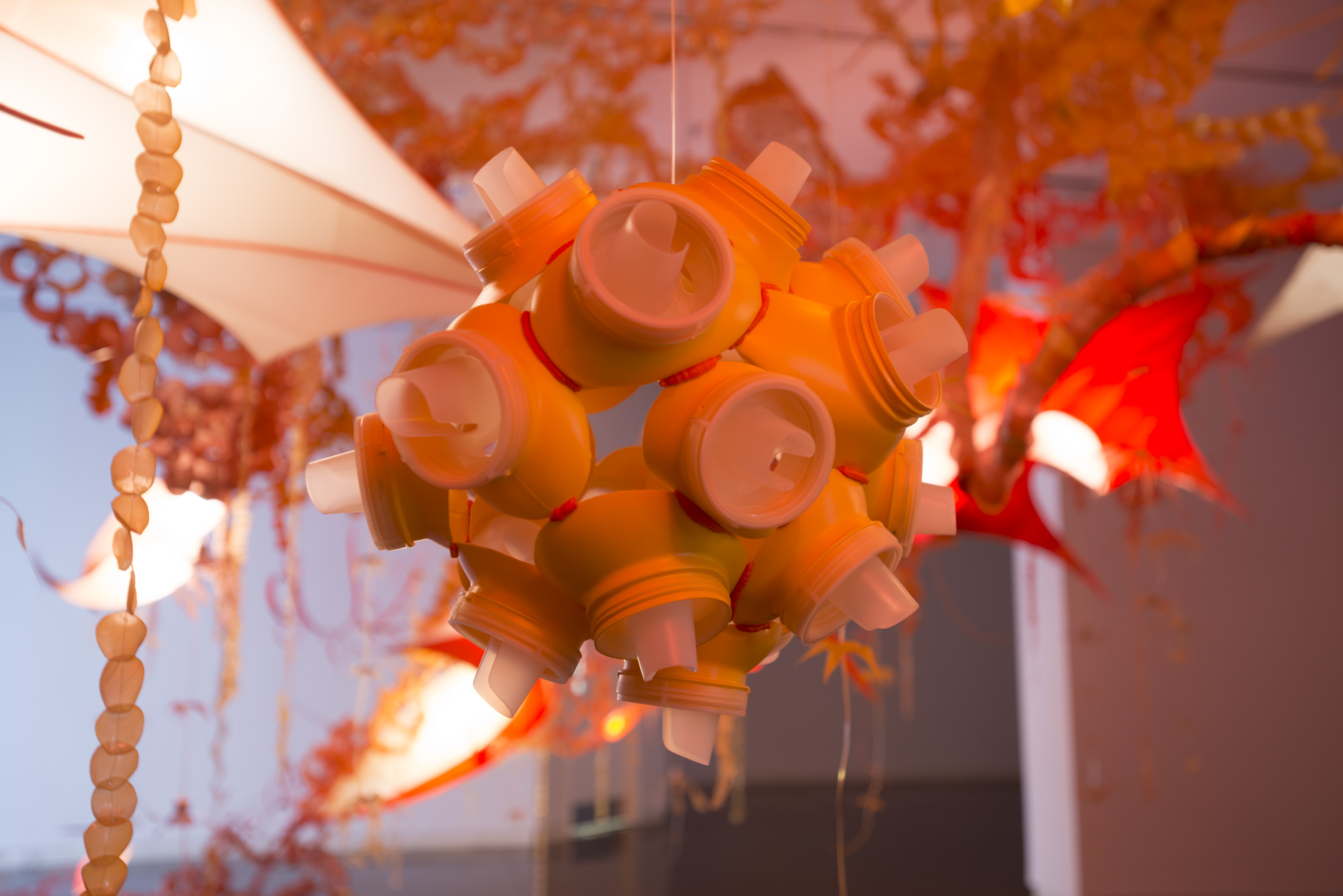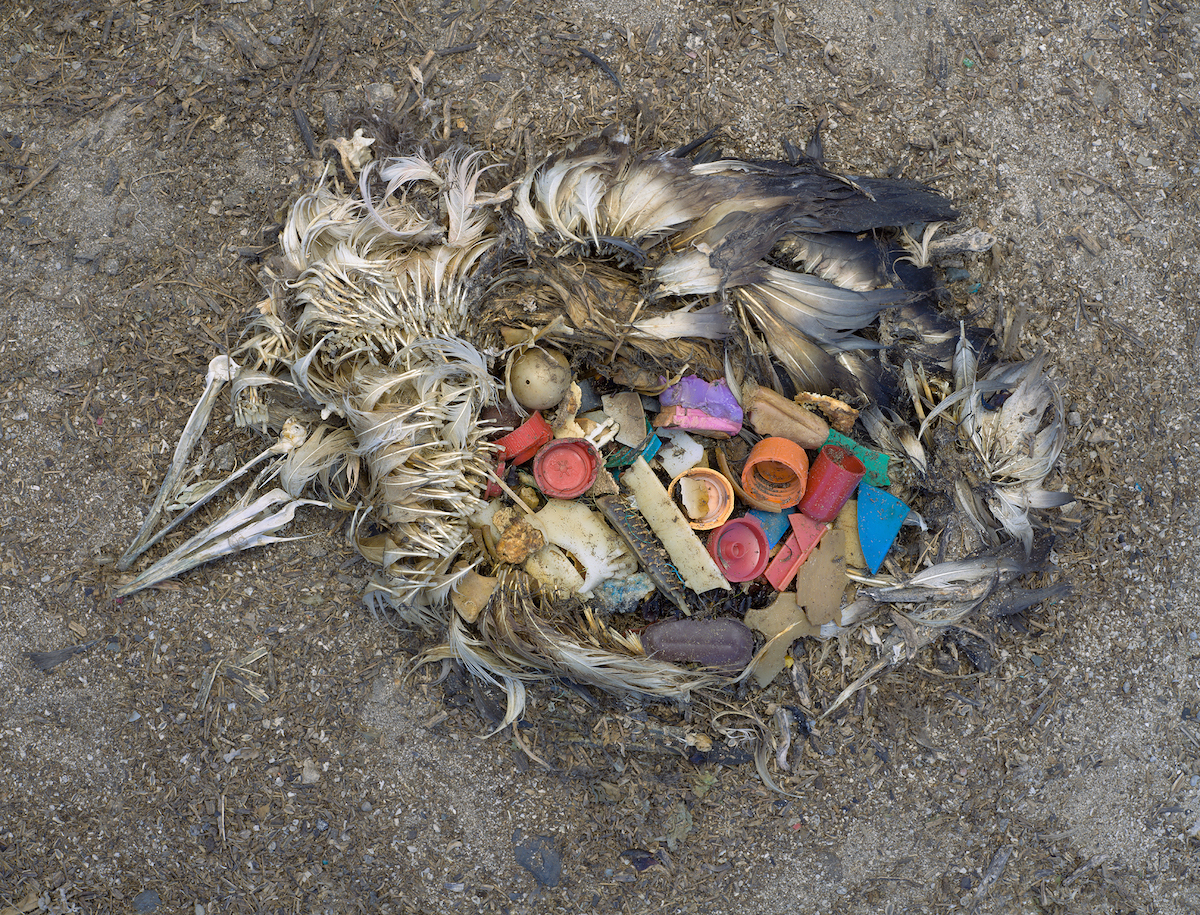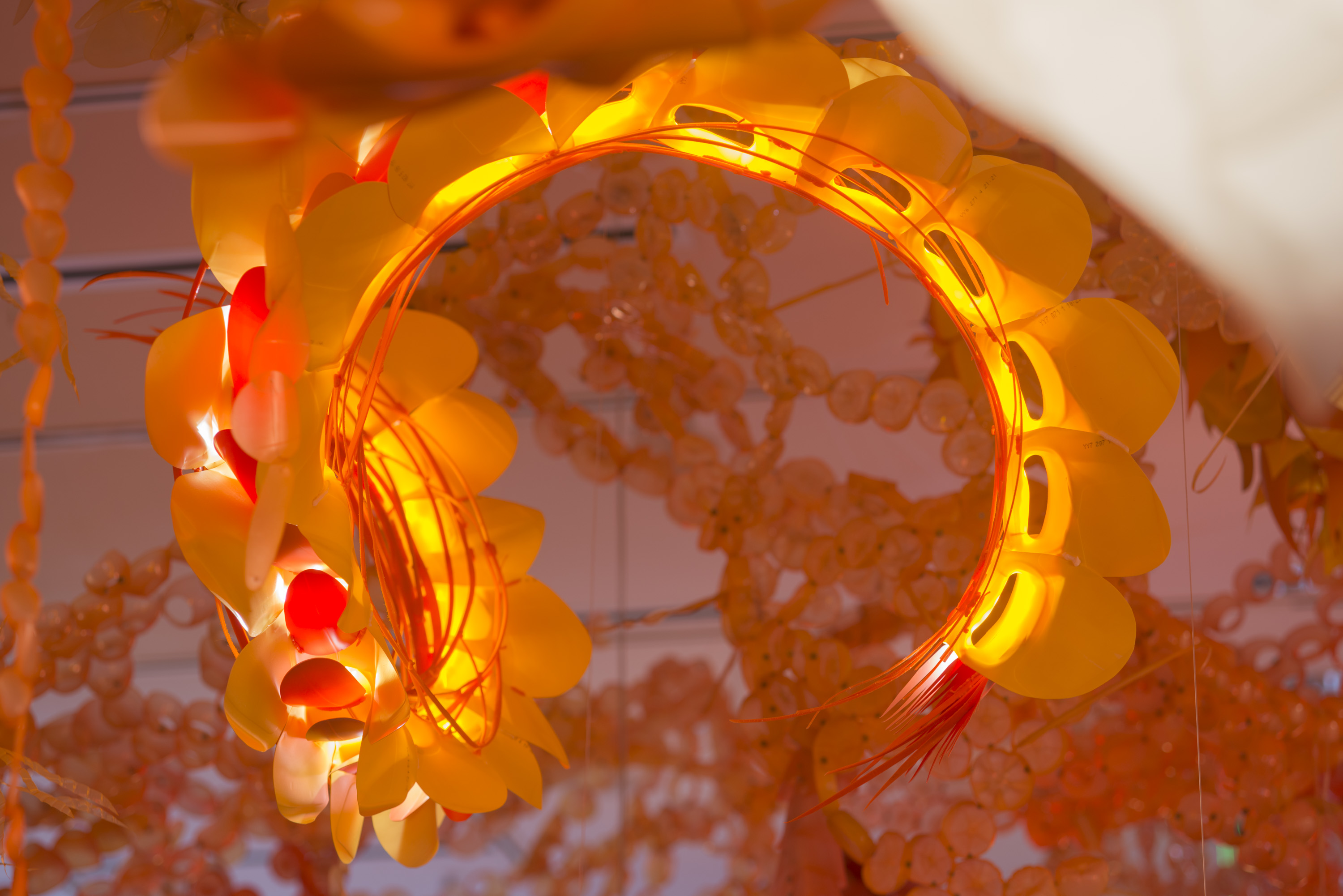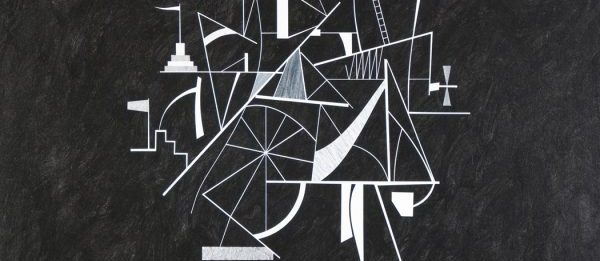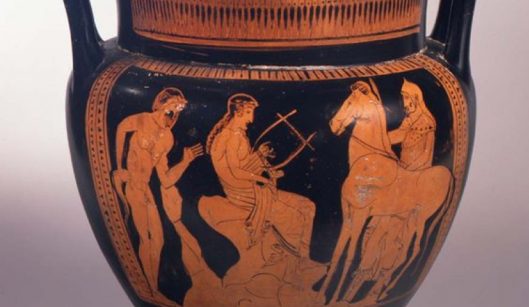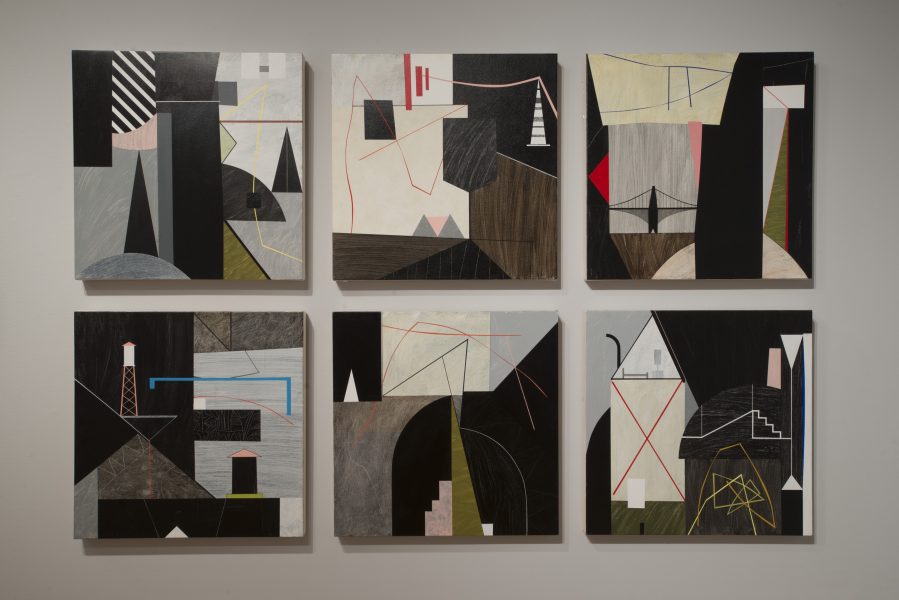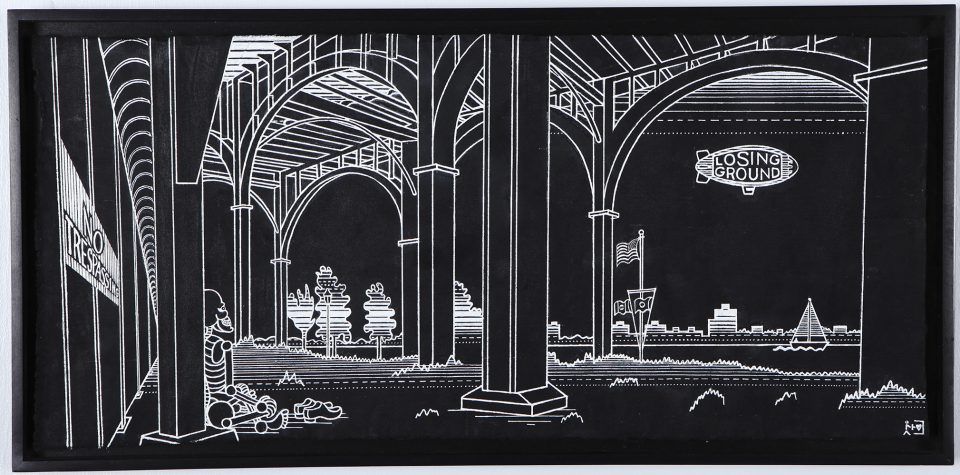EDU BLOG ARCHIVES
Choosing local
Mon Nov 27, 2017
The work of Aurora Robson and Chris Jordan are disparate, but they both leave an impact. They open up audiences’ eyes to the magnitude of the amount of plastics being discarded and the overarching consequences it is having on our environment. Coral acidification, animal suffering, and air pollution–just to name a few. The experience of their artwork left me searching for ways to reduce my plastic use. It also urged me to search for ways to nurture our Earth, analyzing our systems of sustainability as a whole.
READ WHOLE POST [+]
The College of Charleston has been working to increase students’ understanding of sustainability and solidifying a movement to inspire the entire campus. This fall, the Halsey Institute teamed up with the South Carolina Aquarium to bring awareness of the problems of plastic consumption and waste with an exhibition called SEA CHANGE, which is sponsored by the Office of Sustainability, the Quality Enhancement Plan, and others. The exhibition features Aurora Robson: The Tide is High and Chris Jordan: Midway, whose works highlight the problems within our consumer culture, specifically the plastic pollution that fills our oceans.
READ WHOLE POST [+]
Now exhibiting at the Halsey Institute is Aurora Robson: The Tide is High and Chris Jordan: Midway. Aurora Robson uses pre-recycled plastics to create large scale sculptures and installations. Robson’s art prevents plastic entering into the waste stream because they are being repurposed into artwork. Her work has an organic aesthetic that further connects her projects to nature. Chris Jordan’s art concentrates on displaying the consequences of mass consumption and plastic waste through photography and collage. Jordan’s work is confronting and sets the stage for conversation about how humans are affecting the planet. Plastic pollution is a growing global crisis and both Robson and Jordan create visual forms to voice their environmental concerns.
READ WHOLE POST [+]
Tom Stanley is an artist and recently retired professor of Fine Arts from Winthrop University, but most do not know about his earlier careers. In high school, Stanley thought he would become an engineer like his father and even took a mechanical drawing class. Stanley learned how to use triangles, straight lines, and perfect angles to create detailed blueprints. These skills are carried out through his artwork today. During his artist talk on June 17, Stanley told a story about how he would stay up late into the night working at his drawing table, which he strung with holiday lights so not to wake his family. Another memory that stood out to him was drawing triangles into the lining of a jacket that his brother had given him.
READ WHOLE POST [+]
Tom Stanley’s paintings in Scratching the Surface, his solo exhibition at the Halsey Institute, carefully balance easily recognizable forms such as houses and boats with subtle references to art history by utilizing painting techniques that range from sgraffito of the ancient Greeks to drip painting methods found in abstract expressionism. By doing so, he creates contemporary art that is perfectly suited for the revitalized dialogic museum—a space defined by education through conversation and connections. Answers are neither right or wrong, but instead, visitors are encouraged to engage with the space and the art.
READ WHOLE POST [+]
Whether it be on board a train, looking out of a car window, or simply walking around, Tom Stanley’s "A Road to Nowhere" series makes one feel as if they are observing passing landscapes on voyage to somewhere (or nowhere). The "A Road to Nowhere" collection includes four triptychs, two currently on display at the Halsey Institute (set A and C).
READ WHOLE POST [+]
At first glance, Anthony Dominguez’s work in Exit/Alive appears to be dark and steeped with foreboding images of death and misery. Infused with Native American, Mexican, and tribal styles, Dominguez’s work at a closer glance tells much more of story than death. Many of the living figures in his work are accompanied by death, as represented by the skull figures, and they begin to tell a romantic tale of the interaction of both life and death. A push and pull, the yin and yang; there can be no life without death, and no death without life. This understanding of the work is a direct reflection of Dominguez’s view of life itself. He understood that living in fear of death would never allow one to never fully realize oneself to actuality. This is specifically reflected in the piece Master & Slave; the living figure appears to be giving part of himself to his heart and also allowing death to embrace him simultaneously.
READ WHOLE POST [+]


